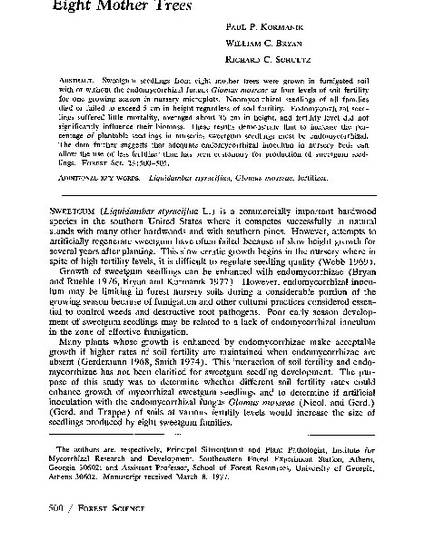
Sweetgum seedlings from eight mother trees were grown in fumigated soil with or without the endomycorrhizal fungus Glomus mosseae at four levels of soil fertility for one growing season in nursery microplots. Nonmycorrhizal seedlings of all families died or failed to exceed 5 cm in height regardless of soil fertility. Endomycorrhizal seedlings suffered little mortality, averaged about 36 cm in height, and fertility level did not significantly influence their biomass. These results demonstrate that to increase the percentage of plantable seedlings in nurseries sweetgum seedlings must be endomycorrhizal. The data further suggests that adequate endomycorrhizal inoculum in nursery beds can allow the use of less fertilizer than has been customary for production of sweetgum seedlings.
- Glomus mosseae,
- Liquidambar styraciflua,
- fertilizer
Available at: http://works.bepress.com/richard_schultz/34/
